In today’s digital age, computer literacy has become a vital skill for success in various fields. As technology continues to advance rapidly, it is essential to equip children with the necessary computer skills from an early age. Computer classes for kids offer a structured and engaging environment where they can learn and develop these crucial skills.
In this blog, we will explore the importance of computer classes for kids and provide valuable insights into various aspects of this educational opportunity. So let’s explore how this field of study can transform the lives of your kids for good!
Table of contents
- Importance of Computer Classes for Kids
- Developing Critical Thinking and Problem-Solving Skills
- Choosing the Right Computer Classes for Kids
- Factors to consider when choosing computer classes
- Structuring Computer Classes Curriculum for Kids
- Hands-on Activities and Engaging Projects
- Benefits of Computer Classes for Kids
- Tips for Encouraging Your Child’s Interest in Computers
- Conclusion
- Frequently Asked Questions
Importance of Computer Classes for Kids
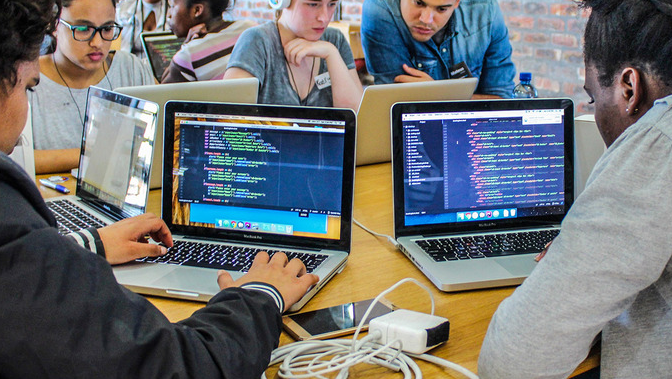
In today’s rapidly advancing digital world, where technology surrounds us at every turn, it is becoming increasingly important for children to develop a strong foundation in digital literacy. Digital literacy encompasses the skills and knowledge required to navigate, comprehend, and utilize various digital technologies effectively.
As the world becomes more interconnected and reliant on technology, providing children with computer classes and fostering digital literacy skills from an early age has become paramount. In this blog section, we will explore the significance of digital literacy for kids and the multitude of benefits it offers.
Why is Digital Literacy Important for Kids?
1. Future-Proofing Skills:
With technology continuing to reshape industries and job markets, equipping children with digital literacy skills becomes essential for their future success. Proficiency in using computers, software applications, and the internet has become a fundamental requirement in various professions. By instilling digital literacy in children, we prepare them for a world that increasingly relies on technology.
2. Empowering Creativity:
Digital literacy offers children a plethora of opportunities to express their creativity. Through computer classes, kids can explore various digital tools, such as graphic design software, video editing applications, and coding platforms. These skills allow them to create digital artwork, develop games, produce multimedia projects, and build websites, opening up new avenues for imaginative expression.
3. Access to Information and Learning:
The internet has revolutionized the way we access information, making it easier than ever before. Digital literacy enables children to effectively search, evaluate, and comprehend online content. By teaching them how to navigate the vast sea of information responsibly, kids can harness the power of the internet for research, educational purposes, and personal growth.
Benefits of Digital Literacy in Childhood
1. Enhanced Communication and Collaboration:
Digital literacy fosters effective communication and collaboration skills in children. Online platforms, social media, and messaging apps provide avenues for kids to connect and collaborate with peers from around the world. By engaging in digital spaces, children learn to communicate ideas, share knowledge, and work together on projects, enhancing their interpersonal and teamwork skills.
2. Critical Thinking and Problem-Solving:
Computer classes that emphasize digital literacy nurture problem-solving and critical thinking skills for kids . Encountering various digital challenges, such as debugging code or troubleshooting software, encourages them to think analytically and develop innovative solutions. These problem-solving skills transcend the digital realm, equipping kids with valuable life skills that they can apply in numerous situations.
3. Digital Citizenship and Online Safety:
Digital literacy goes hand in hand with digital citizenship and online safety. Teaching children about responsible internet usage, online privacy, and cybersecurity helps them navigate the digital landscape securely. By instilling good digital practices early on, we empower kids to become responsible digital citizens, protecting themselves and respecting the rights and privacy of others.
Digital literacy for kids is not just about mastering technology; it is about empowering young minds to thrive in a rapidly evolving digital world. By providing computer classes that focus on digital literacy, we equip children with future-proof skills, foster creativity, facilitate learning, and promote responsible digital citizenship.
Developing Critical Thinking and Problem-Solving Skills
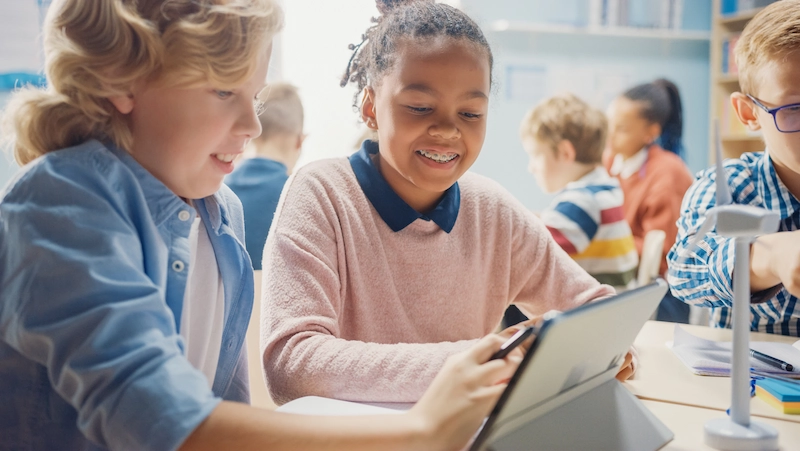
In a world that demands adaptable and analytical minds, developing critical thinking and problem-solving skills has become essential, even for the youngest of learners. Computer classes, with their interactive and dynamic nature, provide an ideal environment for fostering these skills in children. In this blog section, we will explore how computer classes promote critical thinking in kids and how computer education serves as a catalyst for problem-solving skill development.
How Computer Classes Promote Critical Thinking in Children?
Engaging with Complex Concepts:
Computer classes expose children to a wide range of complex concepts, such as coding logic, algorithms, and computational thinking. By delving into these subjects, kids are encouraged to think critically and logically, breaking down problems into manageable components. This process helps them develop their analytical skills and empowers them to approach challenges systematically.
Encouraging Experimentation and Exploration:
Computers offer a sandbox for children to experiment and explore various scenarios and solutions. Through interactive programs, coding platforms, and educational software, kids can test hypotheses, observe cause-and-effect relationships, and witness the impact of their decisions in real time. This hands-on experience fosters critical thinking by allowing them to evaluate outcomes, draw conclusions, and make informed judgments.
Cultivating Problem-Solving Mindset:
Computer classes promote a problem-solving mindset by presenting children with puzzles, challenges, and coding projects. These activities require them to think creatively, analyze the problem at hand, and devise effective solutions. By persistently tackling and overcoming obstacles, kids develop resilience, adaptability, and the ability to think outside the box when faced with complex problems.
Problem-Solving Skills Development Through Computer Education

Analytical Thinking:
Computer education cultivates analytical thinking in children by exposing them to logical reasoning and problem deconstruction. By breaking down complex problems into smaller, manageable parts, kids learn to identify patterns, relationships, and dependencies. This analytical approach nurtures their ability to evaluate information critically and make informed decisions.
Collaboration and Teamwork:
Computer classes often involve collaborative projects, encouraging children to work in teams to solve problems collectively. Collaborative problem-solving enhances communication, cooperation, and the sharing of ideas. It helps kids recognize the value of diverse perspectives, negotiate solutions, and appreciate the power of teamwork in finding effective resolutions.
Iterative Problem-Solving:
Computer programming and coding require an iterative problem-solving approach. Children learn that initial attempts might not yield the desired results, but each failure serves as an opportunity to learn, adapt, and improve. This iterative process nurtures resilience, perseverance, and a growth mindset, empowering kids to embrace challenges and develop effective problem-solving strategies.
Choosing the Right Computer Classes for Kids
Learn about computer components and computer is must, with the multitude of options available, finding the right computer classes that align with your child’s needs and interests can be a daunting task. Let’s explore the key factors to consider when choosing computer classes for kids, ensuring that your little ones embark on an exciting and enriching learning journey.
Best Computer Classes for Kids
- Coding and Programming:
Coding and programming classes introduce children to the fascinating world of computer languages. These classes empower kids to develop problem-solving skills, logical thinking, and creativity while learning to write code. Look for classes that utilize age-appropriate programming languages, interactive platforms, and engaging projects that make coding enjoyable for your child. - Digital Art and Design:
For budding artists and creative minds, digital art and design classes provide an excellent opportunity to explore the realm of digital creativity. Look for classes that teach graphic design software, image editing tools, and animation techniques. These classes not only enhance artistic skills but also introduce kids to visual storytelling and multimedia production. - Robotics and Engineering:
Robotics and engineering classes merge the realms of technology and hands-on learning. Kids get to work with robotic kits, learn basic engineering concepts, and build their own robots. Look for classes that offer a mix of theory and practical application, allowing children to develop problem-solving, teamwork, and critical thinking skills in a fun and interactive environment. - Game Development:
Game development classes offer an exciting blend of creativity, logic, and technology. Kids can learn to design and develop their own games, fostering their programming skills while igniting their imagination. Look for classes that focus on game design principles, game mechanics, and programming languages suited for game development, catering to your child’s age and interests.
How to Find Suitable Computer Classes for Your Child?
- Understand Your Child’s Interests:
Start by understanding your child’s interests and passions. Determine whether they are more inclined towards coding, art and design, robotics, or game development. By aligning their interests with the right computer classes, you ensure they will engage and enjoy the learning process. - Research Local Options:
Conduct thorough research on the computer classes available in your local area. Look for reputable institutions, community centers, or after-school programs that offer structured and well-designed courses for kids. Read reviews, check the curriculum, and consider the expertise of the instructors. - Assess Class Structure and Teaching Methods:
Evaluate the class structure and teaching methods to ensure they align with your child’s learning style. Look for classes that offer a balance between theory and hands-on activities. Engaging and interactive classes that foster creativity and critical thinking are crucial for an enjoyable learning experience. - Seek Recommendations and Feedback:
Talk to other parents, friends, or educators who have enrolled their children in computer classes. Seek their recommendations and insights regarding the quality of the classes, teaching approach, and overall experience. Personal recommendations can provide valuable guidance in making the right choice.
Factors to consider when choosing computer classes

Not all computer classes are created equal. When selecting computer classes for kids, several crucial factors should be considered to ensure a positive and enriching learning experience. In this blog section, we will explore two important factors: age-appropriate computer classes and the significance of qualified instructors in computer education.
Age-Appropriate Computer Classes for Kids
1. Tailored Curriculum:
One of the key factors to consider when choosing computer classes for kids is a curriculum specifically designed for their age group. Children at different stages of development have varying levels of cognitive abilities, attention spans, and motor skills. Age-appropriate computer classes take these factors into account and offer content and activities that align with children’s capabilities and interests.
2. Engaging and Interactive Learning:
Children learn best when they are actively engaged and immersed in their learning environment. Age-appropriate computer classes should incorporate interactive elements, such as games, hands-on projects, and multimedia content, to make the learning experience fun and engaging. This approach not only maintains children’s interest but also enhances their understanding and retention of concepts.
3. Gradual Progression:
Effective computer classes for kids ensure a gradual progression of skills and knowledge. The curriculum should be structured in a way that introduces foundational concepts first and then builds upon them as children advance. A well-designed progression allows kids to develop a solid understanding of fundamental principles before moving on to more complex topics, fostering a strong and comprehensive skill set.
Structuring Computer Classes Curriculum for Kids
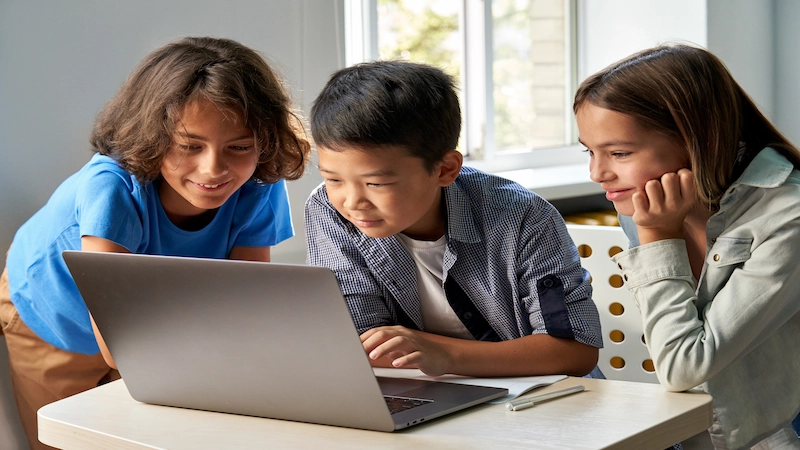
Computer classes for kids play a vital role in shaping their technological proficiency and preparing them for the digital world. To ensure an engaging and effective learning experience, it is crucial to design a well-structured curriculum that addresses the unique needs and capabilities of young learners. In this blog section, we will explore the essential components that should be included in a computer class for kids and discuss how to design effective learning objectives to maximize their educational growth.
What Should Be Included in a Computer Class for Kids?
1. Introduction to Basic Computer Skills:
A solid foundation in basic computer skills is the first step toward building digital literacy. Kids should be introduced to the essentials of operating a computer, including navigating the desktop, using a mouse and keyboard, and understanding file management. This foundational knowledge empowers children to interact confidently with digital devices.
2. Digital Tools and Software Applications:
A comprehensive curriculum should expose kids to various digital tools and software applications. This may include word processing software, presentation tools, image editing programs, and educational applications tailored to their age group. By providing hands-on experience with these tools, children develop practical skills while fostering their creativity and problem-solving abilities.
3. Introduction to Coding:
Introducing coding concepts to young learners can be a transformative experience. Age-appropriate coding platforms and resources, such as block-based programming languages, enable kids to learn computational thinking, logical reasoning, and algorithmic problem-solving. Introducing coding at an early age cultivates a mindset of innovation and prepares children for the digital-driven future. Programs like Codechamps by Brightchamps are a great option that can help your kids get started with coding as they learn about computers.
4. Internet Safety and Digital Citizenship:
An integral part of computer classes for kids is educating them about internet safety and digital citizenship. Teaching them about online privacy, responsible internet usage, and ethical behavior fosters good digital habits. Empowering children with the knowledge to navigate the digital landscape safely and respectfully equips them to be responsible digital citizens.
Designing Effective Learning Objectives for Young Learners
1. Clear and Measurable Goals:
Learning objectives for computer classes should be clear, specific, and measurable. For instance, an objective could be for students to demonstrate proficiency in using word processing software to create and format a document. Clear objectives help both instructors and students track progress and ensure that the desired learning outcomes are achieved.
2. Age-Appropriate Challenges:
Consider the cognitive abilities and attention span of young learners when designing learning objectives. Break down complex tasks into manageable steps to ensure students can grasp and apply the concepts effectively. Engage kids through interactive activities, games, and group projects, making the learning experience enjoyable and accessible.
3. Progression and Continuity:
A well-structured curriculum should provide a logical progression of skills and knowledge. Start with foundational concepts and gradually introduce more advanced topics. Continuity ensures that children can build upon their existing knowledge, fostering a sense of accomplishment and confidence in their abilities.
4. Real-World Application:
Design learning objectives that encourage the practical application of skills. Include projects and assignments that require students to utilize their knowledge in real-world contexts. For example, designing a digital poster or creating a simple interactive game reinforces their understanding while enhancing their creativity and problem-solving skills.
Hands-on Activities and Engaging Projects
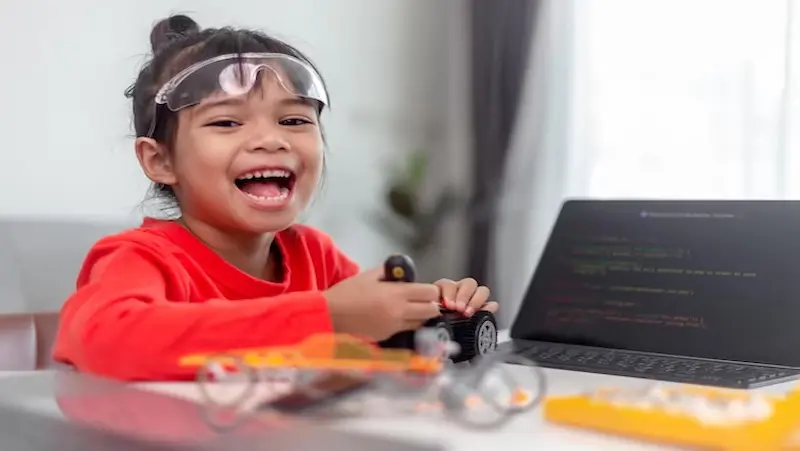
Hands-on activities have become the driving force behind engaging young learners and igniting their curiosity. By incorporating fun projects and interactive learning experiences, computer classes are transforming into hubs of exploration, fostering creativity and critical thinking in kids. Let’s delve into the realm of hands-on activities in computer classes, unveiling exciting projects and interactive approaches that captivate young minds.
Fun Projects for Kids in Computer Classes
1. Game Development:
Introducing kids to the realm of game development can be an exhilarating experience. Encouraging them to create their own games using user-friendly platforms and tools not only sparks their creativity but also helps them understand programming concepts. From designing characters to crafting game levels, children can let their imaginations run wild while honing their problem-solving skills.
2. Digital Storytelling:
Digital storytelling projects offer a captivating way for kids to combine their writing skills with technology. Through computer classes, children can learn to use multimedia tools to bring their stories to life. They can create animated presentations, design digital comics, or produce short films, enhancing their communication skills while delving into the world of digital media.
3. Robotics and Electronics:
Incorporating robotics and electronics into computer classes adds a hands-on dimension that fascinates young learners. Building and programming robots, constructing circuits, and exploring sensors and actuators introduce children to the wonders of engineering and automation. These projects encourage experimentation and problem-solving while nurturing a love for science and technology.
Interactive Learning Experiences for Young Learners
1. Coding Challenges and Hackathons:
Organizing coding challenges and hackathons in computer classes cultivates a competitive spirit while promoting teamwork and creativity. These events allow kids to collaborate, brainstorm ideas, and develop innovative solutions to real-world problems. By engaging in such interactive learning experiences, children gain confidence in their coding abilities and learn to work effectively in a collaborative environment. CodeDecode, which was BrightCHAMPS’ First-Ever Global Hackathon is a great example of hands-on activities in computer classes.
2. Virtual Reality Exploration:
Introducing virtual reality (VR) experiences in computer classes can transport children to new realms of discovery. From exploring historical sites to diving into the depths of the ocean, VR enables immersive learning experiences that spark their curiosity. By combining technology with real-world knowledge, kids can explore various subjects in a captivating and interactive manner.
3. Web Design and Development:
Teaching kids the fundamentals of web design and development opens up a world of creativity and practical application. Allowing them to create their own websites, design layouts, and customize interactive elements enables them to express themselves while acquiring valuable technical skills. Through web projects, children learn the importance of user experience and the power of effective digital communication.
Benefits of Computer Classes for Kids
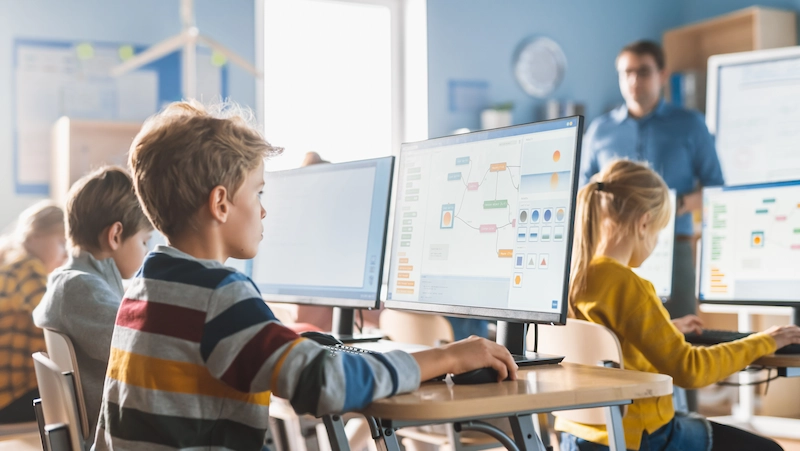
The integration of computer classes into the curriculum offers a multitude of benefits, from enhancing academic performance to cultivating vital STEM skills. In this blog section, we will delve into the profound impact of computer education on academic achievement and how it plays a pivotal role in fostering the development of STEM skills in children.
How Computer Education Impacts Academic Success?
1. Enhanced Learning and Comprehension:
Computer classes provide an interactive and engaging learning environment for kids. By utilizing educational software, digital resources, and interactive multimedia, children can grasp complex concepts more effectively. Visualizations, simulations, and interactive tutorials offer a dynamic approach to learning, catering to diverse learning styles and reinforcing understanding across various subjects.
2. Improved Problem-Solving and Analytical Thinking:
Computer education nurtures crucial problem-solving and analytical thinking skills in children. Programming exercises and logical reasoning tasks inherent in computer classes encourage students to break down complex problems into manageable steps. This process sharpens their critical thinking abilities, enabling them to approach challenges with a systematic and logical mindset, which extends beyond the realm of computers into other academic subjects.
3. Information Access and Research Skills:
Computer classes equip children with the ability to access vast amounts of information efficiently. They learn how to navigate online resources, search engines, and digital libraries, enhancing their research skills. By developing effective search strategies and evaluating the credibility of online sources, students can gather accurate information, explore diverse perspectives, and develop comprehensive projects and assignments.
Enhancing STEM Skills through Computer Classes

1. Coding and Programming Proficiency:
Computer classes offer an excellent platform for children to develop coding and programming skills. Learning programming languages fosters logical thinking, algorithmic reasoning, and the ability to solve complex problems systematically. These skills are fundamental to STEM disciplines, enabling kids to excel in fields such as computer science, engineering, and mathematics.
2. Robotics and Engineering Principles:
Computer education often integrates robotics and engineering principles, exposing children to hands-on experiences in building and programming robots. Through these activities, kids gain practical knowledge about mechanical systems, sensors, circuits, and the application of mathematics and physics concepts. Engaging in robotics sparks creativity, ignites curiosity, and reinforces teamwork as students collaborate to design and program robots for specific tasks.
3. Data Analysis and Visualization:
Computer classes introduce students to data analysis tools and techniques, teaching them how to interpret and present data effectively. Analyzing datasets, creating visual representations, and drawing meaningful conclusions enhance their statistical reasoning and critical analysis skills. These abilities are invaluable in STEM fields, where data-driven decision-making and problem-solving are key components.
Resources for kids to start learning computer skills at home
There are many resources and tools available to help kids learn computer skills at home. Here are a few of the best:
- Coding websites and apps: There are many free coding websites for kids and apps that are designed for kids of all ages. Some popular options include Scratch, Code.org, and Tynker. These websites and apps make learning to code fun and engaging, and they can help kids develop important problem-solving skills. these websites also offer code games for kids.
- Online tutorials: There are many online tutorials that can teach kids how to use different computer programs and software. Some popular options include Khan Academy and Lynda.com. These tutorials are often free or low-cost, and they can be a great way for kids to learn at their own pace.
- Books: There are many books available that can teach kids about computers and computer science. Some popular options include “The Kids’ Book of Computer Science” by Ben Mezrich and “How to Code” by Chris Pine. These books can be a great way for kids to learn about the basics of computer science in a fun and engaging way.
- Parental involvement: It is important for parents to be involved in their kids’ computer learning. Parents can help their kids choose the right resources, provide guidance and support, and answer questions. By being involved, parents can help their kids make the most of their computer learning experience.
In addition to these resources, there are many other ways that kids can learn computer skills at home. They can watch educational videos on YouTube, play computer games that teach new skills, or even just ask their parents for help. The most important thing is to find a way that makes learning fun and engaging.
Online Courses, Coding Apps, and Educational Games
There are many online courses, coding app for kids, and educational games that can help kids learn computer skills at home. Here are a few of the best:
- CodeChamps by BrightChamps is a great learning platform and offers amazing learning programs for kids that ignite young minds with the power of coding. It is a creative wonderland where kids dive into the captivating world of programming, learning to unravel complex algorithms and craft their own digital masterpieces. With a holistic curriculum, CodeChamps nurtures the innate problem-solving abilities of children, fostering their creativity and critical thinking. CodeChamps is where dreams come alive, and the future of innovation takes flight.
- Code.org is a free, interactive website that teaches kids the basics of coding. It offers a variety of games, activities, and challenges that are designed to be fun and engaging.
- Scratch is a free, online programming language that allows kids to create their own interactive stories, games, and animations. It’s a great way for kids to learn the basics of coding in a fun and creative way.
- Tynker is a subscription-based coding platform that offers a variety of courses for kids of all ages. It’s a great option for kids who want to learn more advanced coding concepts
- Khan Academy offers a free, online coding course that teaches kids the basics of Python. It’s a great option for kids who want to learn a real programming language.
- Code Combat is a free, online game that teaches kids the basics of coding. It’s a great way for kids to learn coding while having fun.
In addition to these online resources, there are also a number of educational games that can help kids learn computer skills. Some of the best include:
- Minecraft is a popular sandbox game that allows kids to build anything they can imagine. It’s a great way for kids to learn about coding, problem-solving, and creativity.
- Roblox is a popular online game platform that allows kids to create and play games. It’s a great way for kids to learn about coding, game design, and 3D modeling.
- ScratchJr is a simplified version of Scratch that is designed for younger kids. It’s a great way for kids to learn the basics of coding in a fun and easy way.
With so many resources available, there’s no excuse to start teaching your kids computer skills today. Coding is a valuable skill that can help them succeed in school and in their future careers.
Tips for Encouraging Your Child’s Interest in Computers

Here are some tips for encouraging your child’s interest in computers:
- Make computers a part of your family’s life. Use computers for everyday tasks, such as checking email, browsing the internet, and playing games. This will help your child see that computers are a valuable tool that can be used for a variety of purposes.
- Provide your child with access to a computer. Introduce the computer components for kids, let them understand the working of computer. If you don’t have a computer at home, consider getting one for your child. This will give them the opportunity to explore and learn about computers on their own.
- Set limits on computer use. It’s important to set limits on how much time your child spends on the computer. Too much screen time can lead to problems such as obesity, sleep deprivation, and social isolation.
- Encourage your child to use computers for educational purposes. There are many educational resources available online, such as websites, free computer games for kids, and apps. Encourage your child to use computers to learn new things.
- Be a role model. If you want your child to be interested in computers, be sure to model that interest yourself. Show your child how you use computers for work, school, and leisure.
- Talk to your child about computer safety. Make sure your child knows how to stay safe online. Talk to them about the dangers of cyberbullying, online predators, and inappropriate content.
By following these tips, you can help your child develop a healthy interest in computers. Computers can be a valuable tool for learning and entertainment, and they can help your child prepare for the future.
Here are some additional tips for encouraging your child’s interest in computers:
- Find age-appropriate computer activities. There are many websites, games, and apps that are designed for children of all ages. Find some that your child is interested in and let them explore.
- Be patient. It may take some time for your child to develop an interest in computers. Don’t get discouraged if they don’t seem interested at first. Just keep providing them with opportunities to use computers and eventually, they will find something they enjoy.
- Make it fun. The most important thing is to make computer use fun for your child. If they’re not having fun, they’re not going to want to do it. So find ways to make computer use enjoyable, such as playing games or exploring new websites.
With a little effort, you can help your child develop a healthy interest in computers. Computers can be a valuable tool for learning and entertainment, and they can help your child prepare for the future.
Ways to spark your child’s interest in computers, such as through fun projects or games
Introduce your child to age-appropriate computer projects or games that align with their interests. Encourage them to explore different applications, websites, or coding challenges. This hands-on approach can ignite their curiosity and motivate them to delve deeper into computer science.
How to create a supportive learning environment at home
Establish a dedicated space for your child’s computer activities, equipped with a suitable device and necessary software. Encourage a balance between screen time and other activities. Offer praise and positive reinforcement when your child achieves milestones or completes projects, fostering their self-confidence and enthusiasm.
Conclusion
In conclusion, the importance of computer classes for children cannot be overstated. In today’s digital age, possessing technological skills and literacy is crucial for their future success. Computer classes provide a wide range of benefits, including fostering critical thinking, enhancing problem-solving abilities, promoting creativity, and preparing them for a rapidly evolving job market.
Moreover, these classes empower children to become responsible and ethical digital citizens, equipping them with the knowledge and skills to navigate the online world safely. By investing in computer classes, we are not only providing our children with essential tools for the present but also laying a strong foundation for their future endeavors.
So, let us embrace the significance of computer education and ensure that our children are equipped with the necessary skills to thrive in an increasingly digital world.
To get your hands on more such free and educational resources for your kid’s growth and development, check out Brightchamps’ Blog Page now!
Frequently Asked Questions
Yes, basic reading and writing skills, familiarity with using a computer and keyboard, and an interest in learning are common prerequisites for joining computer classes for kids.
In computer classes for kids, your child will learn coding, problem-solving, critical thinking, algorithmic logic, computational skills, digital literacy, software proficiency, web design, cybersecurity basics, creative thinking, collaboration, troubleshooting, and technology ethics.
The duration of a computer course for kids can vary depending on the specific program and its curriculum. However, on average, it may take several weeks to a few months to complete a comprehensive computer course for kids.
Interactive activities, hands-on projects, gamification, visual aids, collaborative tasks, step-by-step demonstrations, simplified explanations, age-appropriate content, multimedia resources, personalized learning, small group discussions, practical exercises, coding challenges, progress tracking, and adaptive online platforms are some teaching methods used in computer classes for kids.
Yes, there are various certifications and exams available for children who have completed computer courses. Examples include the Microsoft Technology Associate (MTA), Cisco Certified Entry Networking Technician (CCENT), and Scratch Certifications.
Scratch, Python, JavaScript, Blockly, Alice, Kodu, ScratchJr, Logo, Roblox Studio, Minecraft: Education Edition, Swift Playgrounds, Tynker, Code.org, App Inventor, and GameMaker are commonly taught in computer classes for kids.
Yes, parents can attend computer classes with their kids. It is encouraged for parents to be involved in their children’s education and attending classes together can foster a better understanding and support system.

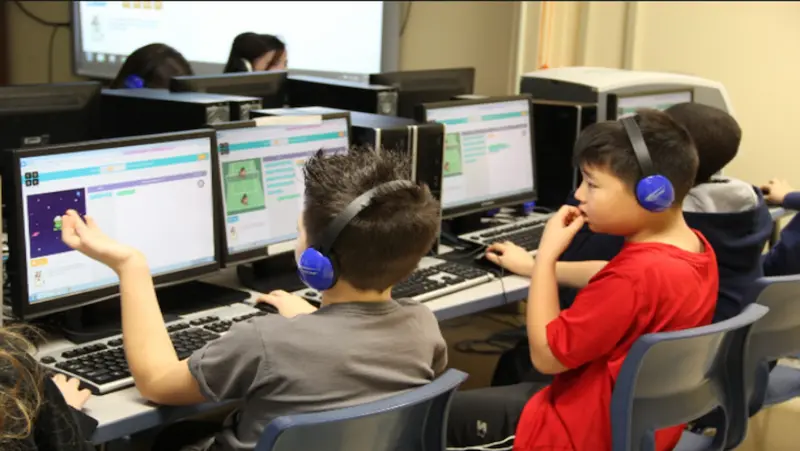
 We are an army of educators and passionate learners from BrightChamps family, committed to providing free learning resources to kids, parents & students.
We are an army of educators and passionate learners from BrightChamps family, committed to providing free learning resources to kids, parents & students.










